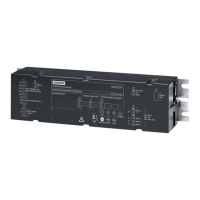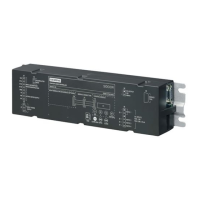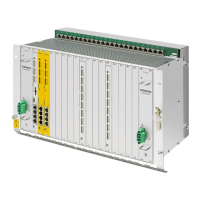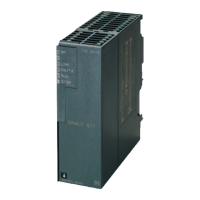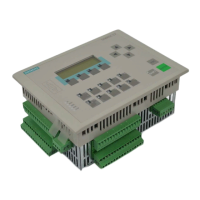Combinations
The following table shows the combination of the door command and the door command
expansion bit that lead to modication of the applicable door command. In the case of
combinations/elds that are not marked, only the door command is eective. In the case of some
drive orders, the dependence of the normal, initial or learn run modes must also be considered.
Table 4-3 Combining door command and door command expansion bit
Door com‐
mand expan‐
sion bit
Door command
Deener‐
gize
(not a door
command)
Stop Open Close Automat‐
ic Assis‐
tedDrive
(Page
84)
Automat‐
ic Impul‐
seDrive
(Page
81)
Position‐
ing
(Page
85)
Learn run
(Page 46)
Stop
with dis‐
able DCU
Specic drive
range
x x
Slow
(Page 66)
x x x x x
ImpulseStop
(Page 81)
Automatic
Impulse‐
Stop
(Page
82)
NDG
(Page 64)
x x x x x
Special Corre‐
sponds
to Dee‐
nergize
(EMF
brake in‐
active)
Learn run
with a new
motor
(Page 46)
Corre‐
sponds to
Deener‐
gize (EMF
brake in‐
active)
Partial open‐
ing (Page 63)
x x x x
DCOPS
(Page 67)
x x x
LB sensor
(Page 112)
x x x x x x x x
Not a door command (Deenergize)
The system evaluates the Deenergized (no current) door command as "inactive" or "not a door
command".
"Special stop" drive order
The door command with the highest priority is Stop. The status following the ramp stop can be
dened by means of the "special" door command expansion bit: EMF brake activated or de-
energized (corresponds to free running mode).
SIDOOR functions
4.1 Basic functions
ATD4xxW for industrial applications
56 System Manual, 06/2022, A5E51901827B AA
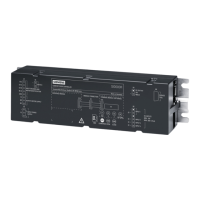
